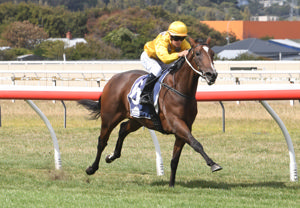To tackle the effects of the COVID-19 pandemic, the Government released a raft of stimulus measures over the last couple of years with the aim of boosting business investments to try and keep the economy afloat. The main focus of the stimulus measures was around accelerated depreciation for businesses, with the introduction of the temporary full 100% expensing of assets.

The depreciation concessions that were available in the 2021 income year were “all over the place”, with an array of rule changes that took place part-way through the year, resulting in multiple sets of rules and timeframes that applied, overlapping each other throughout the income year. Thankfully, the depreciation concessions available in the 2022 income year are much simpler, with the temporary full expensing rules effectively being the predominant concession available.
- Temporary full expensing extended by another 12 months
Broadly, the temporary full expensing measures allow a taxpayer to claim an immediate deduction for the full cost of eligible depreciating assets held and used (or installed ready for use) from 7.30pm (AEDT) on 6 October 2020 (‘2020 Budget time’). This measure was due to expire on 30 June 2022, but the Government has recently passed legislation to extend this by another 12 months to 30 June 2023.
Due to current higher inflation and supply chain problems for many assets, especially new cars (which can take up to 12 months to be delivered!), second-hand assets are, not surprisingly, being acquired by businesses on a greater scale.
The ATO has recently released a Law Companion Ruling (‘LCR’) to provide additional guidance and clarification on the application of the temporary full expensing rules, our focus to be the depreciation windfall associated with holding second-hand assets. This article will finish off with some of the traps associated with claims under these depreciation concessions.
- New ruling confirms depreciation windfall on secondhand assets for small and medium-sized businesses
Whilst there are some assets that are specifically excluded from the temporary full expensing measures that apply to all taxpayers (e.g., assets that are allocated to a low-value pool or a software development pool and certain primary production assets), there are also some additional excluded assets that only apply to certain taxpayers.
Specifically, entities with an aggregated turnover of $50 million or more are not eligible to fully expense a depreciating asset where:
- the entity entered into a contract to hold the asset, or started to construct or hold the asset in some other way, before the 2020 Budget time; or
2. the asset is a second-hand asset (e.g., it is not new).
TAX TIP – When is an asset considered to be a ‘second-hand asset’?
Broadly, an asset will be considered to be a ‘second-hand asset’ for these purposes where another entity held the asset when it was first used, or first installed ready for use, other than:
• as trading stock. Note – broodmares, stallion shares, pin-hook weanlings are not eligible for this temporary full expensing; or
• merely for the purposes of reasonable testing or trialing.
- Which businesses are entitled to claim a deduction under the depreciation concessions for second-hand assets?
In contrast, entities with an aggregated turnover of less than $50 million are entitled to claim an immediate deduction for the full cost of an eligible second-hand asset (and also an eligible preexisting commitment asset) under the temporary full expensing measures.
In accordance with these rules, an entity’s ‘aggregated turnover’ is equal to the sum of the ‘annual turnovers’ of:
• the taxpayer;
• the taxpayer’s connected entities; and
• the taxpayer’s affiliates.
This is a complex concept, and you will most likely need your tax adviser to assist you calculate the ‘aggregated turnover.’ For instance, any income derived from dealings with the taxpayer’s connected entities and affiliates are excluded to avoid double counting.
Broadly, the ‘annual turnover’ of an entity is essentially the GST-exclusive amount of all ordinary income derived by the entity in the ordinary course of its business. Ordinary income is income according to ordinary concepts and is calculated on a ‘gross’ basis rather than a ‘net’ basis. This would include gross sales of trading stock and interest from business bank accounts but would not include proceeds from the sale of business assets.
- How are second-hand assets treated for taxpayers who are ineligible for the immediate write-off?
Where an entity is unable to claim an immediate deduction under the temporary full expensing rules with regards to the cost of a second-hand asset because its aggregated turnover is $50 million or more, then the asset will simply be depreciated under the general depreciation rules (which is generally based on the asset’s effective life).
- New guidelines confirm traps associated with claims under the depreciation concessions
The introduction of the temporary full expensing has raised a number of interesting issues, particularly in relation to its interaction with some of the existing special rules relating to depreciation claims for certain types of assets.
- ATO ruling confirms important adjustments for luxury cars
By way of background, a ‘car’ is defined to be a motor vehicle (other than a motorcycle or similar vehicle) that is designed to carry a load of less than 1 tonne and fewer than nine passengers.
A ‘luxury’ car is simply a ‘car’ that costs more than the applicable car limit for depreciation purposes in a particular year. Depreciation claims (including temporary full expensing claims) on the acquisition of a luxury car that is designed mainly for carrying passengers are calculated by applying the applicable car limit (after taking into account any GST input tax credits claimable by the taxpayer). The ATO car limit for the 2022 income year is $60,733.
Although the temporary full expensing rules allows for the full cost of an eligible depreciating asset to be claimed as a deduction, this does not ‘overwrite’ the existing depreciation limitations that apply to a luxury car. As such, claims under the depreciation concessions for cars will still be subject to the relevant car limit for the year.
EXAMPLE – Temporary full expensing claims for a luxury car
The Dunkeld Trust, which runs a horse breeding business, purchased an Audi SQ7 for $185,000 in the 2022 income year that was provided as a car fringe benefit to one of its director employees. The vehicle satisfied the definition of a ‘car’ for income tax purposes and was designed mainly for carrying passengers. It was used by the Dunkeld Trust 100% for a taxable purpose as a fringe benefit.
How does the Dunkeld Trust calculate its depreciation claim for the 2022 income year under the temporary full expensing measures?
The trust would calculate its depreciation deduction in relation to the Audi SQ7 as follows:
• The cost of the car is $185,000.
• The GST input tax credit entitlement would be limited to 1/11th of the car limit for the 2022 income year (i.e., $60,733), which works out to be $5,521 ($60,733/11).
• The GST-exclusive cost of the car is $179,479, which is still higher than the car limit of $60,733, therefore, the first element of the cost of the car is reduced to the car limit of $60,733.
As such, the Dunkeld Trust would be entitled to claim an immediate deduction of $60,733 in the 2022 income year under the temporary full expensing measures.
- NEW guidelines confirm important adjustments for individuals and partnerships
Whilst the temporary full expensing measures generally allow for the full cost of the eligible asset to be claimed as an immediate deduction, this is still limited to the taxable purpose proportion (i.e., business use %) of the particular asset in question. The most common example of when an adjustment may be required would relate to a car being held by an individual or a partnership.
A taxpayer who carries on business as a sole trader or through a partnership must limit the depreciation claimed as a deduction on a car to its taxable purpose. The sole trader or partnership will generally need to maintain documentation (e.g., a logbook) to validate the taxable purpose (i.e., the business use portion) of the car and limit the depreciation deduction to the taxable use proportion accordingly.
Please do not hesitate to contact the writer if you wish for me to clarify or expand on any of the matters raised in this article.
Prepared by:
PAUL CARRAZZO CA
CARRAZZO CONSULTING PTY LTD
801 Glenferrie Road, Hawthorn, VIC, 3122
TEL: (03) 9982 1000
FAX: (03) 9329 8355
MOB: 0417 549 347
E-mail: paul.carrazzo@carrazzo.com.au
Web: www.carrazzo.com.au










